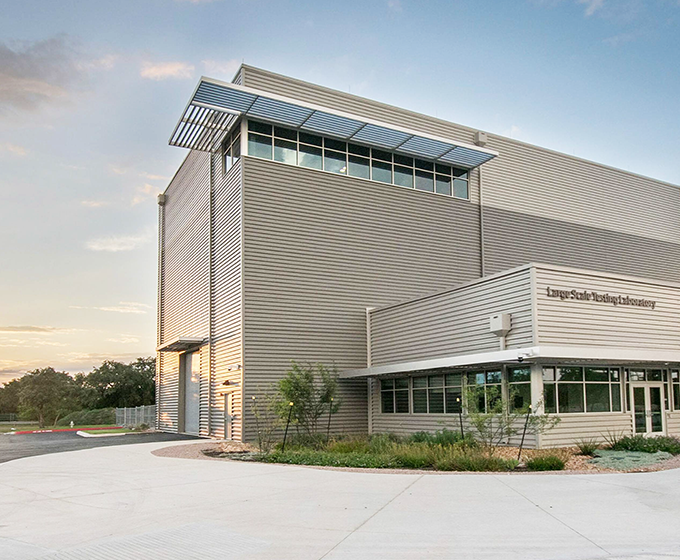Sept. 27, 2019 – The University of Texas at San Antonio is cutting the ribbon on one of the most unique research buildings in the country. UTSA’s College of Engineering will host on Oct. 3 at 9:30 a.m. the grand opening of its Large-Scale Testing Laboratory, a 50-foot-tall facility where civil engineers can test the structural integrity of systems, such as concrete buildings, in a realistic setting.
The $9.95 million Large-Scale Testing Laboratory will serve students and researchers in the Department of Civil and Environmental Engineering, one of the university’s most innovative areas. Researchers within the department have led work to prevent landslides, create drinkable water from rainfall and harvest energy from hot pavement, among other initiatives.
The laboratory will facilitate the testing of components and systems at near 100% scale. Civil engineering students and researchers will build and test structural systems, such as concrete beams, in the 15,000-square-foot facility, supporting a wide array of geotechnical and structural engineering projects. Areas of focus include bridge and building components and new materials needed for increasingly complex construction projects.
“This building is one of few of its kind in the country,” said JoAnn Browning, dean of the College of Engineering. “We are so excited about the capabilities that this facility provides our researchers as we continue to study civil and structural engineering. The laboratory will also be a game changer for our students as they prepare for their civil engineering careers.”
The building has a 40-by-80-foot reaction floor that provides researchers with the ability to test real-size structural systems and components. The reaction floor ranges from 3 feet thick to 5 feet, 6 inches thick and provides the capability to apply test loads up to 4 million pounds of force—making it one of the highest reaction floor capacities in the United States. Underneath the reaction floor is a basement structure for researchers to secure test specimens and monitor experiments.
The Large-Scale Testing Laboratory will give UTSA researchers the capability to test large-scale systems and components with spans of up to 70 feet. Two cranes each with a 30-ton capacity for loading, unloading and transporting heavy specimens are installed in the facility.
The test floor area is surrounded by staging and shop areas with a length of 10 feet, which allows testing specimens as long as 90 feet. The clearance between the reaction floor and the bottom of the cranes is 40 feet, providing researchers the ability to test structures as tall as four stories high.
A large-capacity hydraulic power supply and high-pressure distribution lines with access manifolds in the service chase facilitate the use of servo-controlled actuators anywhere on the test floor. The hydraulic power supply and distribution system provide the ability for civil and structural engineering researchers to simulate a wide range of issues, including high-cycle fatigue, earthquakes and blast loads.
The facility includes support areas for fabrication and instrumentation of specimens; offices for students, faculty and staff; and a conference room where visitors can observe tests as they are performed.


